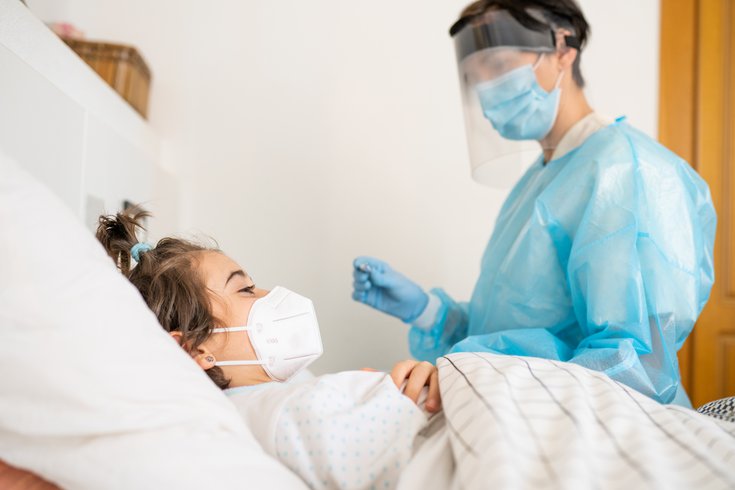
August 11, 2021
 Source/Image licensed from Ingram Image
Source/Image licensed from Ingram Image
New findings from the Children's Hospital of Philadelphia could help develop a breathalyzer to detect COVID-19. Researchers found infected children emit unique biomarkers when they breathe.
Researchers at the Children's Hospital of Philadelphia have identified six biomarkers in the breath of children infected with the coronavirus and four of them are specifically unique to children with COVID-19.
Their findings, they say, could lead to the development of a quick and easy breath test to detect COVID-19 in children.
"Given the cost, discomfort, and false-negative results associated with current testing methods, a breathalyzer test may provide an inexpensive, noninvasive, rapid and highly sensitive alternative for screening of large numbers of people, like at airports, large indoor events, or even school settings," said Dr. Audrey R. Odom John, chief of CHOP's division of pediatric infectious disease.
COVID-19 is currently diagnosed through a nasal swab test either using polymerase chain reaction to scan for specific nucleic acids or a rapid antigen test. But the concept of a breathalyzer to detect COVID-19 or other illnesses is not new.
Rutgers University researchers have been developing a COVID-19 breathalyzer test. Their test would collect users' exhaled particles and deposit them onto an electronic biosensor, providing results in just 10 minutes.
Penn Vet studies have shown that dogs can detect COVID-19-related VOCs in a person's breath. VOCs are gases emitted from everyday products and processes. Other researchers have developed sensors to detect VOCs in the breath of adults with COVID-19.
Similarly, Penn Medicine researchers have developed an "electronic nose" to sniff out cancer using VOCs.
For their study, the CHOP researchers used specialized gas separating techniques to analyze VOCs in the breath samples of 15 children with COVID-19 and 10 children who tested negative for the virus.
Out of 84 VOCs, they found six that were significantly elevated with children with COVID-19. Two of the VOCs also have been found in the breath samples of infected adults, but the other four were unique to children.
The researchers then conducted the same analysis on a second group of children – 12 with a positive PCR test and 12 with a negative test. They came up with the same six biomarkers and determined they could predict infection with 91% sensitivity and 75% specificity.
"These findings also stress that for a breathalyzer to be broadly useful, it will need to scan for markers that are present in both children and adults, in order to yield the most accurate results across the population," John said.
The CHOP researchers have filed for a patent on their findings and are now investigating the VOC profiles of other viruses to ensure the sensitivity and accuracy of any potential COVID-19 breathalyzer.
Their findings were published in ACS Infectious Diseases.